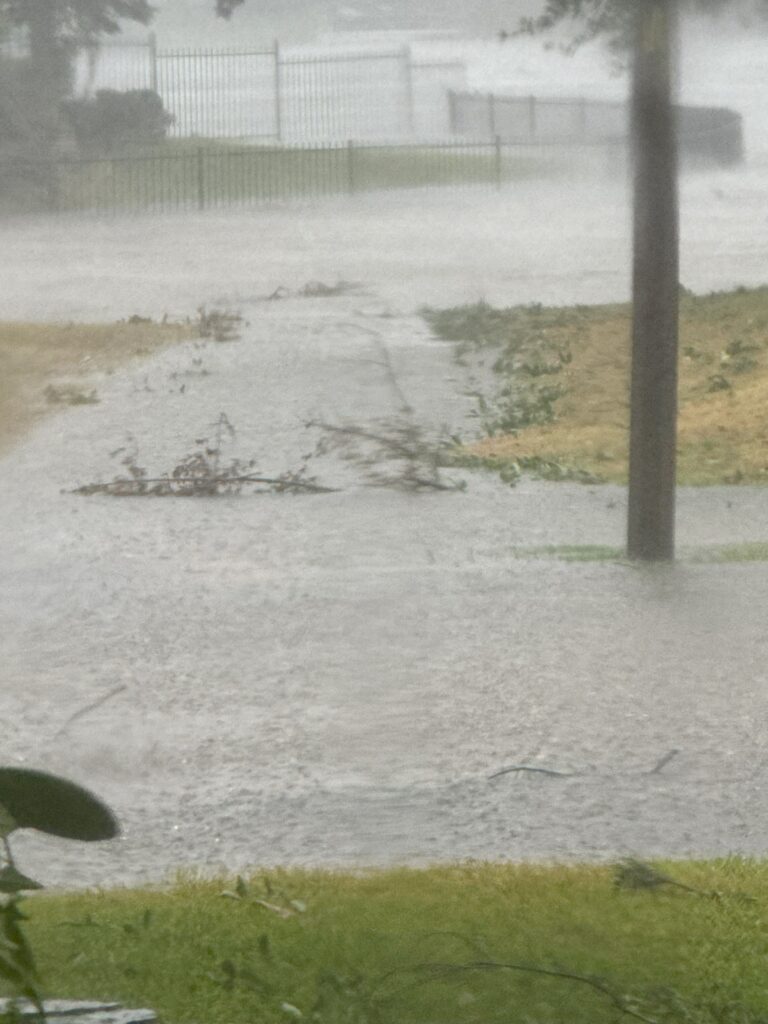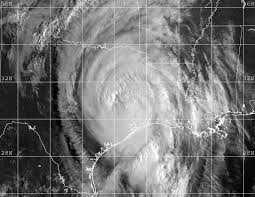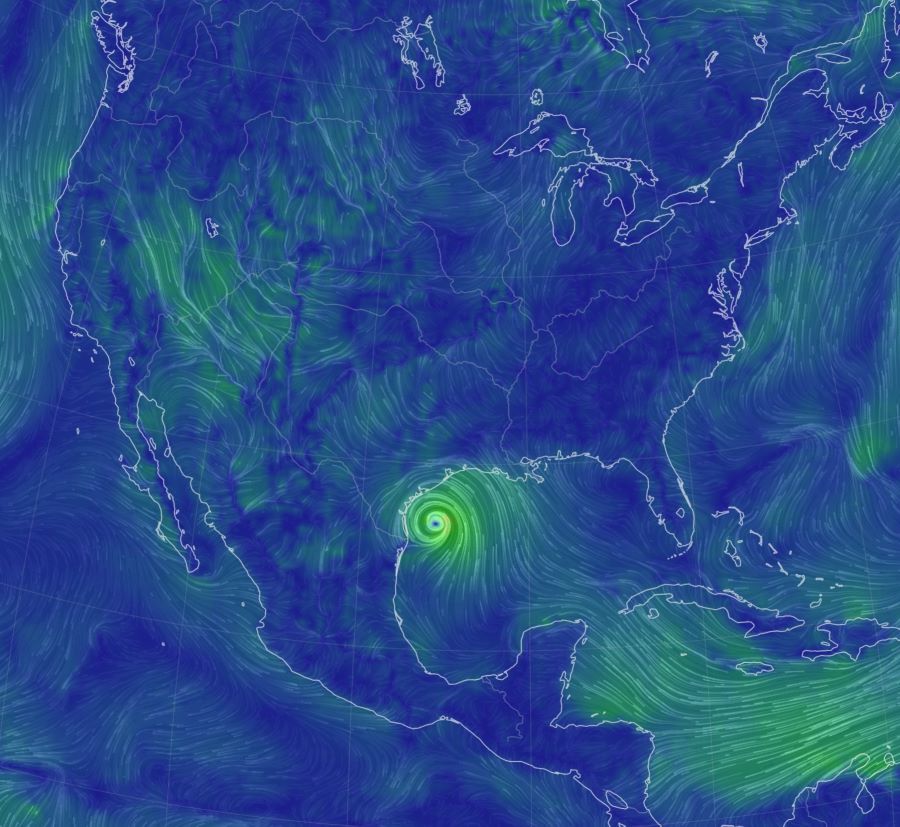This is more of a whitepaper – fair warning. We really want to help our community think about how to use technology and various authoritative data sources in their planning for these impactful events that will be coming at us, all seasons. We have a lot of experience, hard-earned wisdom, a world-wide perspective and lots of thoughts about the endless possibilities ahead.
What people want – what people NEED after a hurricane blows through and power is out is to be able to visualize when they might get power back into their homes. Then the recovery begins.
Hurricane Beryl came in and breezed through our area leaving a huge swath of destruction and misery – we saw her “inch” to the east on our storm maps… and yet, the Metro Houston Area’s largest power provider was not prepared to show people a power outage map like their industry brothers and sisters in the business… Communication and forthright information to customers and government officials was not obviously a part of their response and recovery game plan – if they even had one.
So tick-tock, and people waited… And waited… and it’s now Monday, and that happened last Monday. Some people are still waiting…and the ensuing days have not produced the optimal recovery of the power that people depend on to stay cool from excessive heat, and keep food supplies safe for their families.

Tree’s down, wires and electrical infrastructure strewn about, everything was impacted.
Where there’s a will, there’s a way – spit and bailing wire innovation!

Photo by Valeria Boltneva on Pexels.com
Well, because people were looking for a way to at least “guesstimate” where there were outages…Some clever folks discovered the What-a-Burger map!
Bingo! Every What-a-Burger store that was open (meaning had power), was their traditional orange and the ones that didn’t have power (not open) were grayed out symbols.
This could give people a general idea of what areas had power and what areas did not. Clever people looking for a short term fix!
Today, What-a-Burger is thinking of enhancing this functionality. Imagine that. Community-minded heroes do exist in our midst!
What was going on with the power companies?
CenterPoint.
Caught with their drawers down (broken maps and apps not fixed since May…) – Communication and PR totally missing… The result is that what top level leadership who has not experienced hurricanes before didn’t do may severely hurt them…
CenterPoint has their number of customers out on their outage page as an info-graphic. After several days of public outcries, they produced a map to attempt to show the picture of outages. It was not great quality. People laughed (angrily). Since that time, they have provided progressively better map functionality, but the problem is that it was an after-thought, not available continuously and this appears to be spit-and-bailing wire with duct tape for now.
Today as of this writing, they still have hundreds of thousands of customers out. 266,366 as of this writing. Over the past days they have restored over two million of their customers – 2,002,057 as of this writing. But five days later the miserable percentage was nearly 40%.

Entergy Texas.
The electricity provider, Entergy, on the other hand, has an existing outage map and a mobile app with access to the map embedded as a part of its tech stack for customers.
Not long ago, they transitioned their applications to leverage more of their smart meter driven data for customers to use for visualizing their energy consumption, costs, and when outages occur; we can see it, almost immediately. It did pretty well keeping up with real-time during this storm event, with similar numbers to CenterPoint – but the communication and engagement with customers, officials and news sources was immediate, and forthright.
They had multi-tiered communication. It was frequent and detailed. They get a big gold star for their response communication. All of the power providers had big challenges. Entergy gave us details and kept us informed, even though the news was not always what we wanted to hear. They adjusted expectations all the way through and continue to do so.

Our experience with our power and internet providers:
Initially, during the storm, as winds were blowing through, and power went out, I think a lot of us reported our outages as they happened, and then cell and WIFI connectivity began to degrade because those towers and servers were electricity dependent, and obviously geo-redundancy was not being used for some of them.
As long as we had power, some of us had fiber internet (buried underground) that we could use – and if we got the perfect opportunity of getting to somewhere where there was back-up power and fiber, we could really see the Entergy outage map and how bad the problem was. In the meantime, we also got updates via SMS from Entergy – example of their multi-tiered communication.
So, we give Entergy a top prize for keeping us informed and enabling us to read updates, no matter what device we were using, and if we had internet or just dodgy cell service we could at least get SMS messages – they seemed to have all the bases covered during the response phase. Nobody is 100% perfect, but communication goes a long way in helping customers plan.
Kudos to Tachus Fiber Internet – they get five gold stars for their pre-storm communications, ongoing communications, response reporting, and social responsibility.
Tachus was out in the community with food trucks giving out food and water in their service areas. Kudos to their CEO for doing disaster response and recovery planning and activating it immediately They are rather new relatively, but let’s just say that their playbook was excellent for this event.
Past Events Compared to Now
We remembered the days when we had no type of communication and how difficult and scary it was. We sat outside with our neighbors in the post-storm humidity eating up thawing meat by holding a neighborhood hurricane party, waiting and listening for transformers to come on off in the distance. No mobile devices. No television (no power!), so it was essentially hanging with the neighbors and hoping for things to power up again. It was many days.
With Hurricane Ike in 2008 was very much a disaster not unlike this one – a wind event with lots of downed trees and power lines – transformers blown – and for us two weeks without power – they only had CAD maps, and we had to go fill out a form every day that we didn’t have power – in their local office… Not convenient.

Now, with smart-meter technology, and a good mapping system, they have integrated a lot within their mobile and web apps. Since our last experience with Entergy and having a major outage with ice storms, we’ve been using their apps and maps when we had cell connectivity.
We didn’t lose power during the Derecho event in May. For this Beryl event, we were satisfied with the level of information and their ability to set expectations. We were given the outside dates, but for our area, we were restored earlier than expected. Psychologically, this works better than no information or being given promises then failures to keep them.
Bottom Line – The CenterPoint situation points out that planning requires more than just responding as if it’s a normal day – and the type of planning for emergency response and recovery for critical infrastructure is a different animal.
OK, back down at CenterPoint, with nothing but hand-waving and fuzzy numbers with little detail being published, after the second day, into Day 3, finally there were enough complaints and likely there was enough public pressure and embarrassment such that they had to do something.
After much pressure, CenterPoint pushed an Esri StoryMap which was revealed by one of the local news stations in a blog on Wednesday afternoon, July 10th. Since that time, it has an improved map but it is still not optimal – not like Entergy’s outage map application. Both use the same underlying technology applied differently.
So, we have been looking at CenterPoint’s map as they are evolving it – it’s not a permanent fix, but better than nothing. It’s now been moved to their outage tracker page, for people with internet and power, available but, comparing what should be apples to apples, the quality isn’t really comparable to the tried and true Entergy outage tracker map which is there all the time.
CenterPoint’s map is an event map – so, who knows what they will have for a more sustainable outage tracking map – they have said they are re-designing and will have something out there in a “few months”. Communication is the number one issue for them. The lack of transparency. The excuses. Those are big issues to address regardless of what happened to their former tracking map back in May when the Derecho blitzed through and overwhelmed (broke) their map? Their servers? Who knows?
We don’t have experience with Texas-New Mexico Power, but they seem to have a robust response portal with maps and communication.
Their outage tracker is similar to Entergy’s but using a different technology. Their communication about progress is right up front – in the customer’s view as soon as they hit the site. Their area is smaller for the Houston Metro footprint – but still very important. Obviously, they got the memo on how to use the technology to inform their customers.
The name is old but on their about page on their website they explain it. They serve a bit more than a quarter-million homes and businesses in Texas. Their headquarters are up in the DFW area in Lewisville, Texas. They actually serve more customers in Texas than Entergy Texas, but Entergy is part of a multi-state conglomerate that serves a large number of customers in Arkansas, Louisiana, Mississippi and Texas.
All three power companies who are the major ones serving the Houston-Metro area have apps and maps for customers to track outages and progress – check them out – you choose which is the best one related to level of detail for customer information:
So far – The Big Lessons and Must-do’s:
Communication and PR – Perception is everything!
- COMMUNICATE from the earliest time all the way through to the end of the recovery. Make communication strategy a top priority!
- Have communication and interaction capability available for stressed out people after an environmental event does damage and crashes the power grid.
- People pay significant amounts of their earnings for energy, yet their needs are disregarded over the need for providers to make a profit or cut costs. This is inhumane. Communication is not rocket science.
- A narrative and a map with symbology is helpful. But, keep in mind that multiple levels of communication about outages will be needed. If internet is down or spotty, mobile providers may be able to leverage SMS to send messages. Whatever it takes.
- We can see that CenterPoint’s map is trying to communicate to customers, but will it change near-real-time? Is it data driven” We don’t know. It says it’s updated every few hours – not accurately telling anyone how it’s updated. People who still have no internet cannot see this webpage unless they are in a cooling center or somewhere with WIFI. To them, this is just a cruel joke. Perception is everything, we can’t repeat that enough.
- Give detailed updates. “Here’s what we’ve done, and here’s what we have left” – both are needed and this is needed not just once a day, but every few hours. Connect with the news media! Do whatever it takes. Be out with the crews! Show that you care!
- This is CRITICAL INFRASTRUCTURE, folks! The public needs to be informed always about what is going on with their power and internet.
- Plan, process, data, maps, stats, all drive the underlying data generation for communicating to the public.
Prepare for the worst.
There isn’t a lot more that we can say. Our advice is to use models to look at what would happen at the different levels of cyclones. These exist. Get help from weather forecasters who model this stuff. They can show you and you can use your brilliant people to devise strategies for every level! It is do-able!
- Use your existing technology for strategic planning! You pay for it, use it!
- Plan using historical data, with geospatial technology and analysis as a major tool set in the planning array. Leverage the government produced data that weather forecasters and scientists create day in and day out for use by the public. It’s free and accurate! Use it!
- Use maps and continually do spatial analysis to understand whether weather predictions indicate that there may be severe weather conditions that impact energy consumers – ingest weather data and understand fully the impacts to the greatest level of detail possible.
- It’s inconceivable that the weather models of today aren’t being used to stage the “just in case” actions – to ready crews from far away who may need time to travel.
Technology and data in strategic planning – use them! Use the data that is available – all sorts of authoritative streaming real-time and near real-time data as well as interpretation layers – for use by the public… NOAA and NWS – USE these resources that we all pay for!
Available weather data is there for the using… Note:
- Weather data from authoritative sources is available at no cost.
- Weather prediction services by qualified meteorologists are available at cost ranging from free to more expensive – but compared to damage and liabilities – the cost is small.
- Recognize that anywhere inside the “cone of uncertainty” can be a potential for high winds and rain enough to cause outages and damage – keeping in mind that Beryl was a Category 1 – still a very dangerous storm capable of doing much damage – and she did.
- Tie weather predictions to “be-ready” plans – better safe than sorry… Anywhere inside that cone needs to be prepared especially if you are a major power provider!
Our wish list is to standardize planning across all critical infrastructure providers including water, power, gas, internet, and mobile for the effects of climate extremes, fires, earthquakes and other events…
- Why not a communication standard across all critical infrastructure including, electricity, gas and water? There should be a communication standard for response and recovery. Follow Entergy’s example. It’s not perfect, but it’s working.
- Risk benefit analysis – all a part of strategic planning. Make recovery plans clear. Publish a recovery plan for public viewing before any bad weather. There are templates available for free to get started!
- Triage. Assess. Prioritize. Do. Use Six Sigma! There are so many options! First we do this, next we will do that, next, next, next, until we get it 100% recovered.
- The threat of cyber-attacks is now a very real issue. Of course revealing details about infrastructure designs is not what people are asking for… Just information to enable them to make a plan. Understand the risk/benefit balance – should we show where these are and their condition? What’s the risk? The right level of detail – can give information without too much risk.





